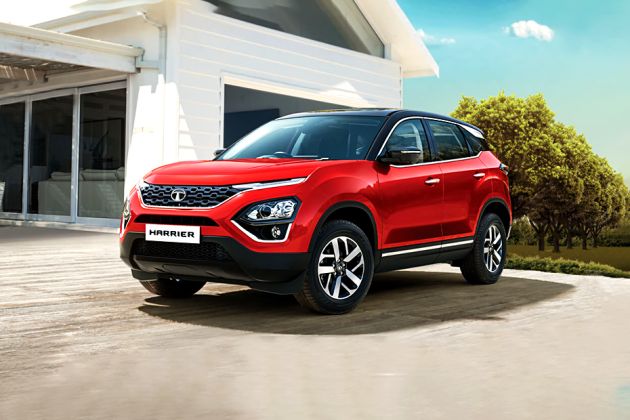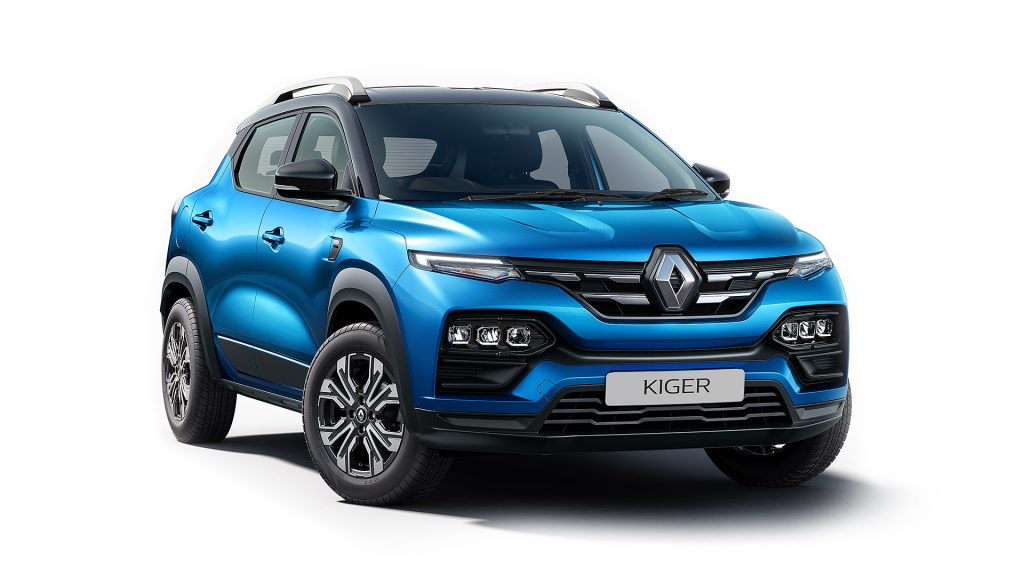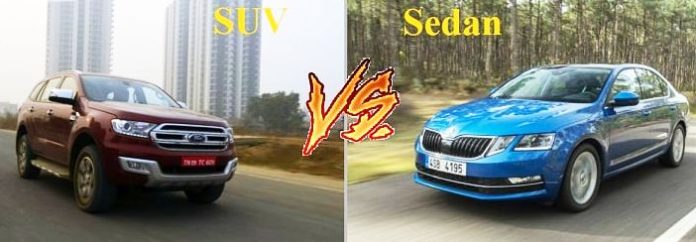By Auto Crat
The focus of automobiles in India has changed considerably through the last decade and, especially, after the Covid pandemic that saw disastrous sales across private automobile segments. there are two segments in passenger vehicle sales that have seen big boosts. The first are compact hatchbacks and the second, of course, are SUVs. The latter, in fact, has seen such demand push that it has now outpaced even sales of compact hatchbacks, considered today the entry level cars.
Amid this, the biggest loser has been the sedan segment. It is not because the sedan has lost its point of comfort among drivers and riders. Sedans remain one of the best car segments when it comes to overall comfort and luxury. They have remained status symbols for a long time, and as family cars, they have provided huge benefits to the buyer.
There are many reasons why the sedan segment has seen lack of growth in this country. The primary among them are three major factors: parking problems, which led people to compact hatchbacks, unsuitable road conditions, which led people to SUVs, and the realignment and dramatic fall of SUV prices. The last two factors have been so active and prominent in influencing buying decisions, that SUV sales today have outpaced compact car sales as well, a thing which could not have been envisaged earlier.
Can we really compare a sedan with an affordable SUV? This is a tricky question, and it will depend on which section of buyer you are looking from. The Ciaz of Maruti Suzuki, for example, despite being only a mid segment, moderately priced sedan, has positioned itself as a car that has aspirational value in India. This may bring out the real lack of purse power of the common buyer, though it does not explain why SUVs, definitely priced higher than the Ciaz are selling better. It also does not explain why similar segment sedans, such as the Honda City and Hyundai Verna are falling back in sales. The affordability argument of SUVs falters here.
Of course SUV’s have higher commanding view of the road, wider and more spacious cabins, bigger and more powerful engines, and a comparatively affordable price tag, but if you consider that it is difficult for the aged and many women to even get into an SUV, sedan sales should not have plummeted. Then you have to consider that the young have more money today. And of the aged who have money, go in for higher level sedans, such as Mercs or BMWs or such.
Parking spaces
Another reason behind sedans being largely ignored is the fact that those consumers who are bothered by cramped parking spaces, congested roads, and too much traffic often prefer to buy a compact hatchback to ease their driving experience. While on the other hand, those who aren’t bothered by these factors go in for a larger-than-life experience that SUVs fully cater to. This leaves the sedan segment sitting in the middle, for generally the executive/business class or working professionals who prefer a chauffeur-driven and comfortable ride.
The only place where sedans still hold a dominant position is the luxury market that caters to specialized premium sedan buyers and where brands like Audi, Mercedes, BMW, etc. innovate mostly in the sedan segment. For a regular buyer, spending a little more to bring home an SUV that can accommodate the whole family seems to be a better choice, considering the fact that SUVs are now substantially affordable and diverse ranging from Rs 10 lakh to Rs 1 crore.
With all factors combined, it seems as if the Indian consumer sentiment is moving away from sedans. Will the segment re-emerge or not is a thing yet to be seen.
The SUV era
Hence, this may be called the SUV era. Before getting into the deal one may consider a caveat. Earlier, large SUVs were all diesel. With the price difference in India, even Honda had introduced diesel engines in its sedans, introducing the Amaze, a low performance small sedan. The diesel deal has evaporated for two reasons. The price difference has reduced considerably, and then there is the law that limits diesel car lives to just 10 years, compared to 15 years for petrol cars.


So the SUV seems to be the only word on the majority of car buyers’ minds these days. Gone are the days when hatchbacks were budget-friendly, sedans were elegant and luxurious, and SUVs were “too big, too expensive”. People have realized the benefits of owning an SUV, and the sales numbers support the same. Today, SUVs are selling not only more than sedans, but also more than hatchbacks in some cases.
The case for SUVs
Compared to a sedan, or a hatchback, an SUV is much more spacious in most cases. The higher up seating position makes the driver and the passengers feel like they are sitting in a much larger vehicle. The higher ground clearance makes it much more practical for Indian road conditions.
One must realise, that despite the huge change in the road sector of India, with many more expressways, roads within cities and in rural and semi rural areas, remain deplorable. People in India are driving more, and it is impossible to think of driving sedans and hatchbacks on such deplorable roads.
The height of the sitting position in SUVs also eases the process of getting in and out of the car, especially for the taller folks. Of course, this does not apply to elders. Most SUVs are also heavily loaded with features nowadays. Segment features like a panoramic sunroof, dual-zone climate control, and ADAS, things like these have come into SUVs first.


More options
What is pushing these sales numbers?
Manufacturers have also realized that SUVs are selling like hotcakes, and they’re coming up with more and more options every year. As of now, the number of SUVs one can buy under Rs 20 lakh is astonishing. Ten years ago, no one would have believed that an SUV would be so accessible for the common man. Even for segments where hatchbacks used to be dominant, SUVS like the Nissan Magnite and Tata Punch have started winning over buyers.
Emotion
In the last couple of years, Indian brands Tata and Mahindra have witnessed immense support from both, existing and potential customers. This mainly started after the “Vocal for Local” movement began in 2020. People also realized that Indian cars were much safer and better built than cars from other manufacturers. Now, since Tata and Mahindra primarily sell only Sport Utility Vehicles, buyers automatically rolled over to this segment.
Comparison
Is an SUV really better than a sedan or a hatchback? That really depends on one’s preference. However, in general, if a vehicle in a similar price range can offer a bit more space and a more commanding position, it is a slightly better deal. As compared to hatchbacks, we can clearly say that a mini-SUV is a much better option. For sedans vs the big ones, the only thing that matters here is personal preference.
SUV vs Sedan
Cars are modes of transportation designed with four wheels and are intended to carry passengers. The first vehicle or car was a carriage with a pedal. It was followed by the steam-powered car of the late 18th century and early 19th century.
The first internal-combustion-powered car was introduced in the late 19th century, and since then it evolved into the gasoline-internal-combustion-engine-powered car of today. Cars also come in several types and designs depending on their manufacturers.
The sedan is the most common body design of cars. It features three separate compartments for the passenger, cargo, and engine. The passenger compartment has two rows of seats with the cargo compartment located at the rear end and the engine at the front end.
It has low ground clearance and usually has four doors, but there are also models with two doors. It also has fixed window frames, and all sedans are fully closed cars.
Sedans come in several types, namely:
- Notchback
- Fastback
- Two-door
- Hardtop
- Hatchback (this segment is differentiated from sedans in India)
- Chauffeured (one which has a boot/trunk)
A sport utility vehicle (SUV), on the other hand, is a vehicle which is designed like a station wagon but with the chassis of a light truck. It may or may not have four-wheel drive which allows it to be used on or off-road. It has the combined features of a pickup truck, a minivan, and a large sedan.
It is also known as 4×4, 4WD, or by its brand name such as Jeep or Land Rover (in India low priced SUVs are common). Although four-wheel drive SUVs can be used off-road, they are mostly used on paved roads. They are expensive to maintain because of their size and weight which make them consume more fuel.
SUVs feature an engine compartment and a combined passenger and cargo compartment with three rows of seats. They have high ground clearance and an upright boxy body which give them a high centre of gravity.
Summary
1. A sedan is a type of car that has four wheels, four doors, and a low ground clearance while a sports utility vehicle (SUV) is a type of car that also has four wheels and four doors but has a high ground clearance.
2. The sedan is the most common type of car, and it has been in the market since the early 20th century while the SUV is a very popular type of car which has been available since the 1930s.
3. Sedans have three compartments; the engine compartment located at the front end, the cargo compartment at the rear end, and the passenger compartment while SUVs have two compartments; the engine compartment and a combined passenger and cargo compartment.
4. Sedans have two rows of seats while SUVs have three rows with the cargo compartment located directly behind the third row of seats.
5. A sedan is smaller and is more fuel efficient while an SUV is bigger and consumes more fuel.
6. An SUV has the combined features of a pickup truck and a minivan while a sedan does not.





















